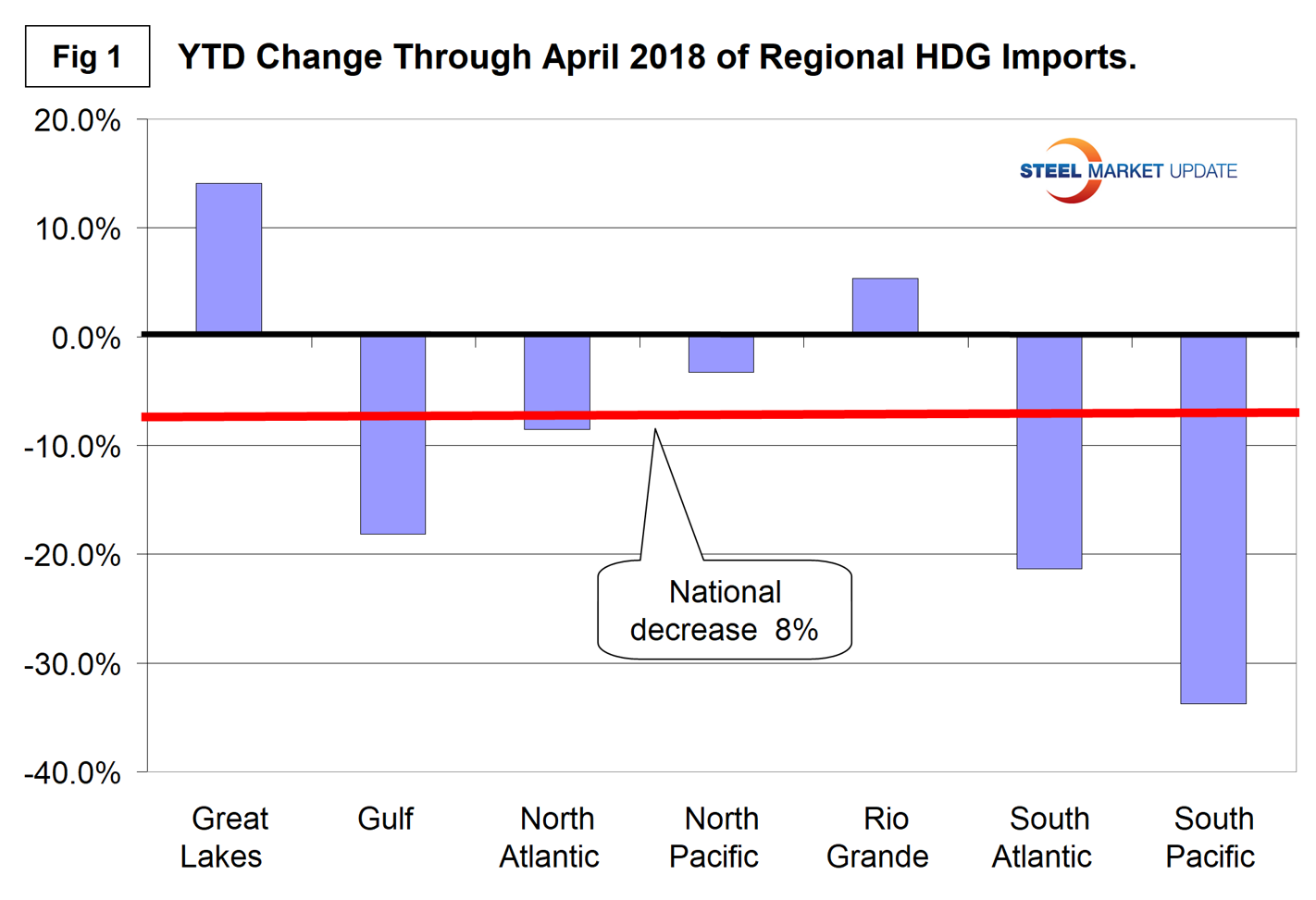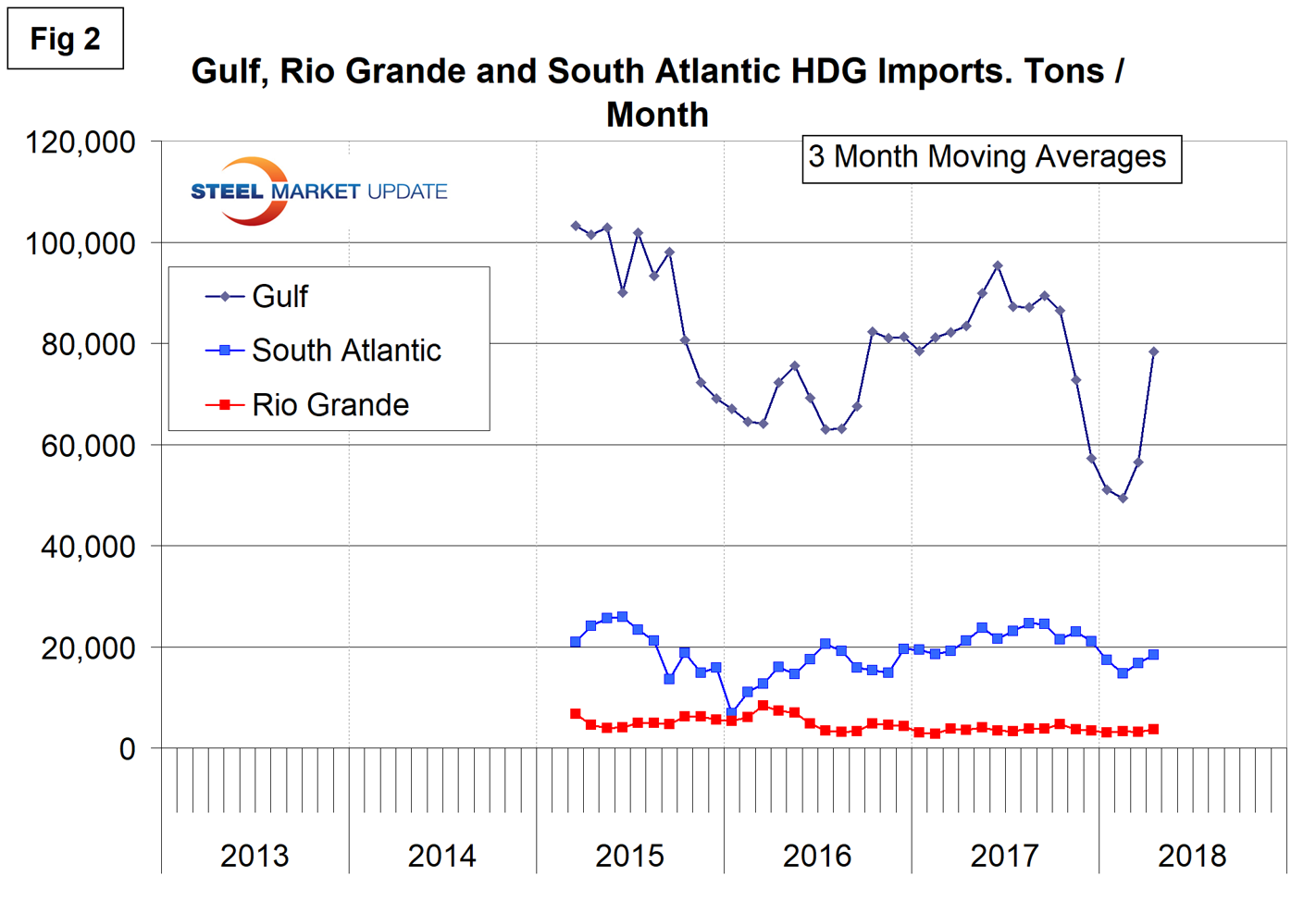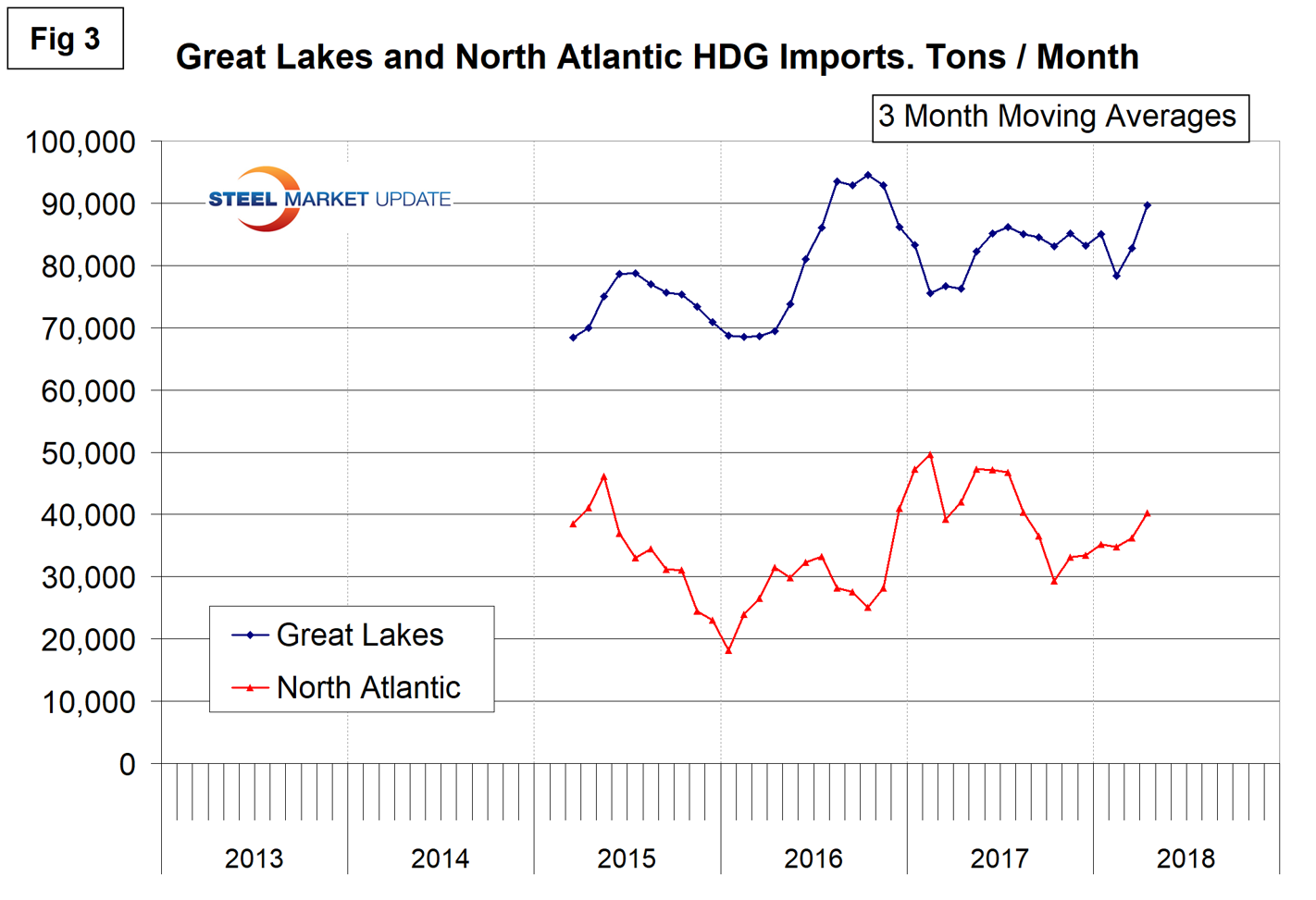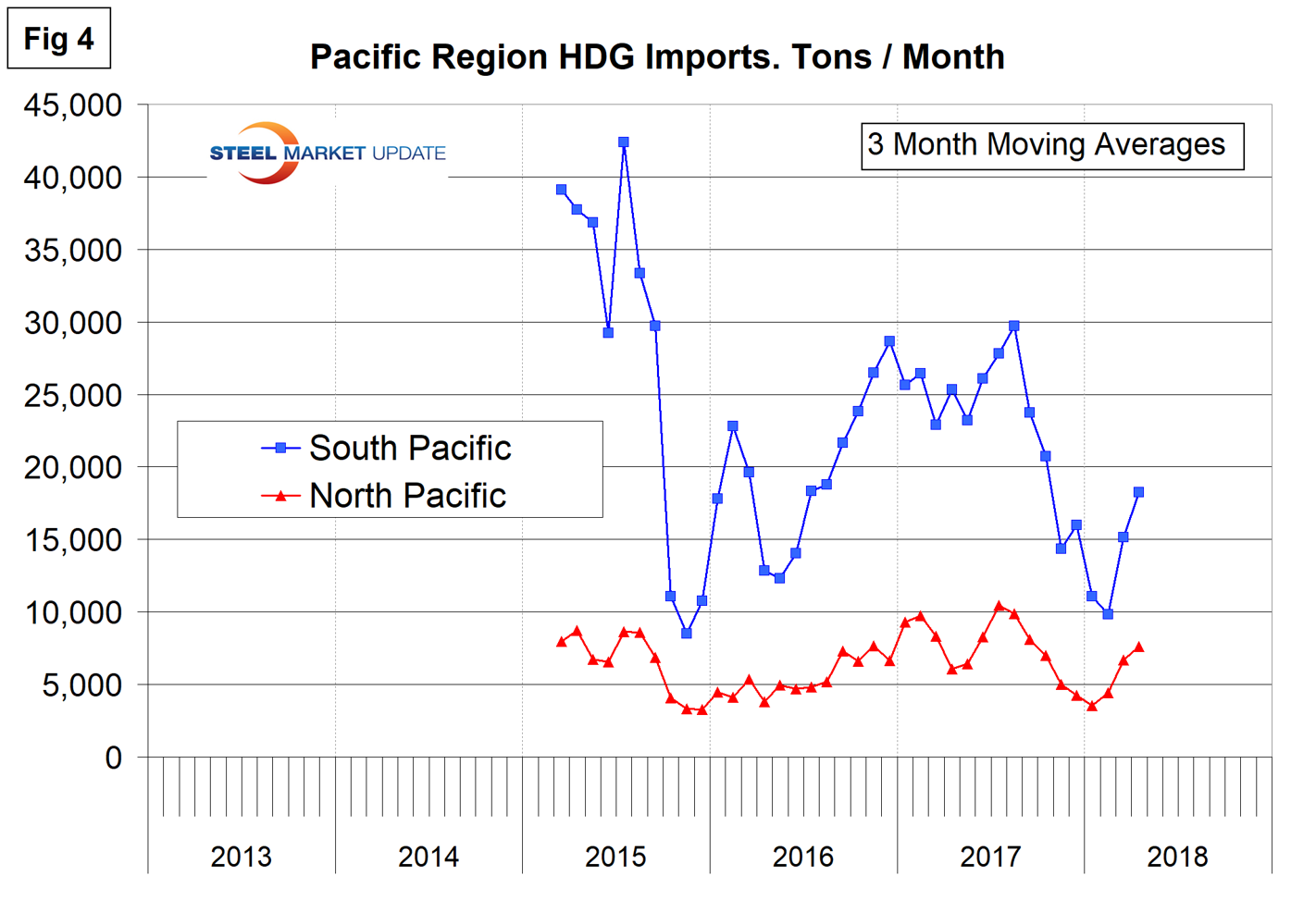SMU Data and Models

SMU Premium-Level Report: HDG Imports by Region
Written by Tim Triplett
June 14, 2018
Editor’s Note: Not a Premium-level subscriber to SMU? See the sample Premium report below:
Imports of hot-dipped galvanized sheet into the U.S. as a whole declined by 8 percent year to date through April, but the Great Lakes region was up by 14.1 percent and the South Pacific was down by 33.8 percent.
Imports can vary significantly from one region to another. Steel Market Update has produced import reports by product at the national level and detailed reports at the port level by source nation. This new analysis of U.S. International Trade Commission data plugs the gap between SMU’s other reports by identifying changes at the regional level. Produced for the first time this week are reports on hot rolled, cold rolled and hot-dipped galvanized steel.
Data for this report on HDG covers March 2015 through April 2018. The next report we publish will have data back to March 2013.
Figure 1 shows the year-to-date change in HDG imports for each of seven regions and the change at the national level. The variability was considerable, with the South Pacific region down by 33.8 percent and the Great Lakes region up by 14.1 percent. The other regions ranged between these extremes with five showing year-over-year contraction and two with increasing volume.

Figures 2, 3 and 4 show the history of HDG coil imports by region since March 2015 on a three-month moving average basis.
Imports into the Gulf have been erratic in the time frame shown. There was a huge spike in April 2018 that is masked somewhat by the three-month moving average. The greatest contribution to this spike was tonnage into Houston from Russia and Vietnam. Russia also returned to New Orleans after being almost absent for the first quarter of 2018. Imports into the South Atlantic and across the Rio Grande have been more consistent, but with much lower volume.

Volumes into both the Great Lakes and North Atlantic regions declined in the second half of 2015 and since then have had a slowly increasing trend. In the single month of April, the volume into the Great lakes was the highest in the three years and four months considered.

Volume into the South Pacific ports of San Diego and Los Angeles collapsed in the second half of 2015, recovered through July 2017, but since then they have been erratic. Volume into the North Pacific ports has been much lower and more consistent.

Executive-level subscribers can upgrade to Premium-level content by emailing info@SteelMarketUpdate.com or calling 772-245-8630.

Tim Triplett
Read more from Tim TriplettLatest in SMU Data and Models

SMU’s June at a glance
A look at SMU data for the month of June.

SMU Survey: Buyers’ Sentiment rebounds from multi-year low
Both of SMU’s Steel Buyers’ Sentiment Indices edged higher this week. Current Sentiment rebounded from a near five-year low, while Future Sentiment rose to a two-month high

SMU flat-rolled market survey results now available
SMU’s latest steel buyers market survey results are now available on our website to all premium members.

SMU Survey: Sheet lead times pull back after early-June blip, plate holds
Following the uptick seen two weeks ago, lead times eased this week for all four sheet products tracked by SMU, while plate lead times held steady, according to this week’s market survey.

SMU Survey: Pricing power abruptly shifts to steel buyers
The majority of steel buyers responding to our latest market survey say domestic mills are more willing to talk price on sheet and plate products than they were earlier this month. Sheet negotiation rates rebounded across the board compared to early June, while our plate negotiation rate hit a full 100%.
